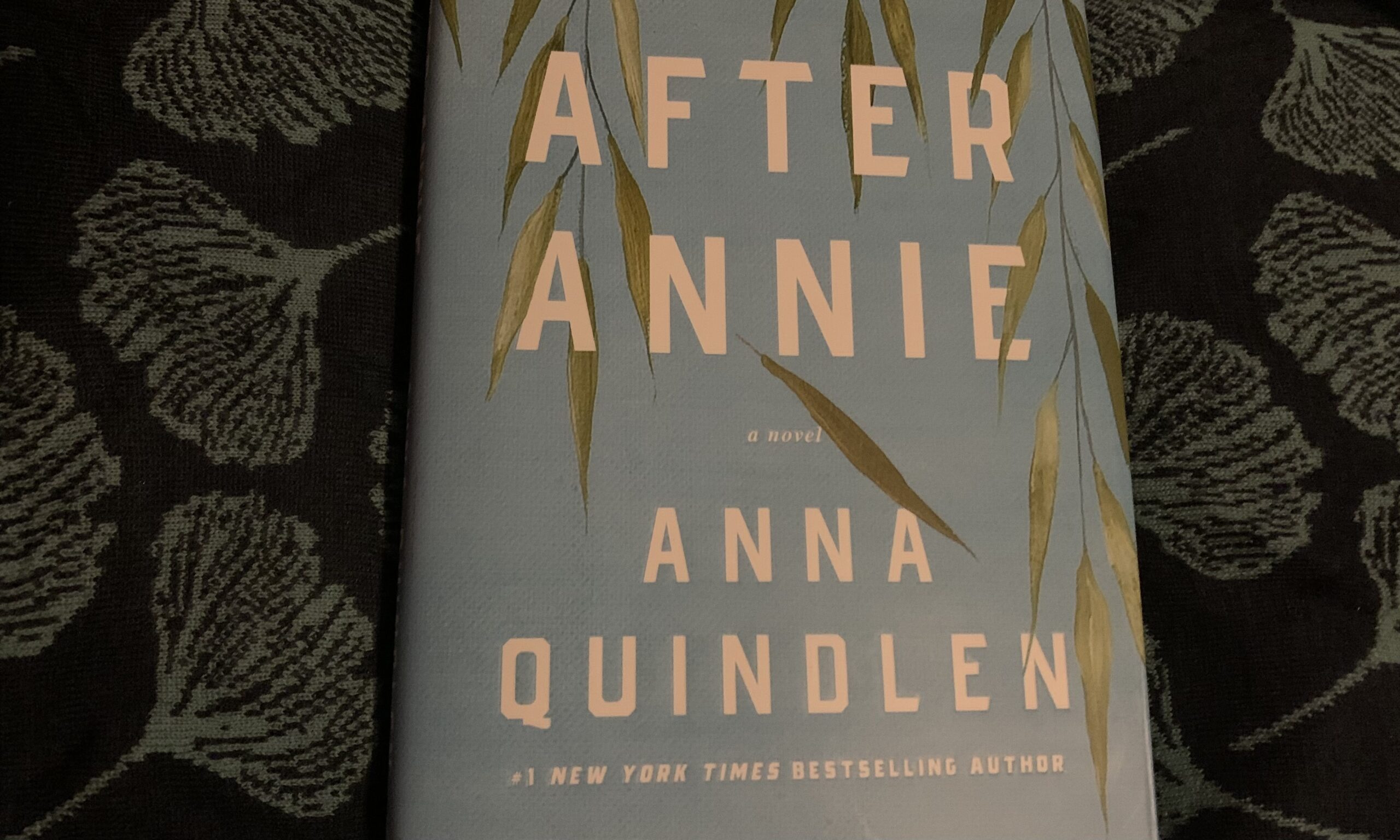Long ago, shocked and full of sadness, I sat down to write a eulogy for my mother, who had died on a chilly April night long before we expected she would. I began with these words by Anna Quindlen: “Grief is a whisper in the world and a clamor within…Perhaps that is why this is the least explored passage: because it has no end…This is why it comes as a great surprise to find that loss is forever, that two decades after the event there are those occasions when something in you cries out at the continuous presence of an absence.”
Quindlen knows that real grief is not about generalities; our sorrow surges as we recall the details that make up a person’s life, and too often, we recollect those details–an expression, a gesture, a turn of phrase–in the months and years following the person’s death. And, later, when our sorrow is less fresh, we know that speaking our memories and sharing those details are ways of recalling a person to us, of keeping him or her alive.
As I read After Annie, I wept. Each harrowing detail, each remembered bit about Annie, makes a mosaic—a portrait in fragments. There is no possibility for a happy ending because Annie Brown, the heart of her family, dies on the first page: the novel is the story of her family managing—or trying to manage—the year following Annie’s death. The structure of the seasons reminds us that the passage of time is inexorable; we are often surprised that the sun continues to rise and set, the flowers bloom, the snow comes, and the seasons turn, whether or not we want to freeze time. For those who grieve, there is agony in understanding that our enormous loss is not a loss for everyone: “Just like that, Annemarie thought as she drove West, the world spins forward. The kids go back to school. The adults go back to work. The open rectangle of earth is filled in. People begin the work of forgetting. But not me, she thought.” There is fear that we, too, will forget and guilt that the pain of immediate loss may, one day, diminish.
Annie, who married young, is the mother of four children, a wife, and a best friend. She is alive for only a moment, asking for Advil because of a terrible headache. Then, standing by the stove, she collapses on the floor of her kitchen, spoon in her hand, her hair—dyed too brassy a shade—splayed out, her purple slippers motionless, her little boys picking at the meatloaf she had placed on the table for supper.
Her family’s and her best friend’s sad journey through the year following Annie’s death feels intensely immediate: we are drawn into the ordinariness of a family’s life as they suffer unimaginable loss. We stand with 13-year-old Ali, the oldest, staring into the empty refrigerator. We witness her boys at the nursing home where Annie worked, each resident possessing an afghan blanket Annie had crocheted, and we return to the weeping willow, planted in her memory, where Ant, the oldest boy sits, having fled school. We breathe quietly as Bill, her husband, weeps silently in the shower or in his truck, on his way to an early morning plumbing emergency. We want to shout, “No, no!” to Annemarie, Annie’s best friend, who teeters on the edge of dependence on painkillers and tumbles back into the abyss because she is mourning the loss of her greatest love–her mirror self from girlhood.
Do not give this book to anyone who has suffered a recent loss. It would be too much. But those of us who have walked the landscape of grief may find this novel both excruciating and comforting: Quindlen understands that it is not just death or loss that gets those who are left behind–it is the specificity of a person–her scent, the sound of her voice, her mannerisms–that we ache for.
Quindlen does not shy away from the rage that those left behind feel at the clichés heaped upon death. In the school counselor’s office, Ali says: “I didn’t lose my mother. I hate it when people say that. I didn’t lose her, and she’s not gone, and she didn’t pass away. She’s dead.” Ali speaks the truth adults too often dodge. Later in that scene, Ali uses the present tense to describe her mother, still alive in her mind’s eye, and my breath caught. There’s a finality when we, reluctantly, shift to the past tense in talking about someone we love who has died.
Quindlen shifts narrators deftly and moves back and forth through time, allowing us to be drawn inside the life of this chaotic family–one that has too small a house, too mean a grandmother, too little money, too many children—that Annie piloted, a capable captain, keeping all the metaphorical plates in the air, keeping her sense of humor and her reservoirs of love. Quindlen doesn’t make Annie a paragon, a choice I appreciated. Annie is tough, doesn’t suffer fools gladly, speaks hard truths. But she loves her family. She also, we learn, loves the moon, points out the different moons to her family, names them, is inspired by them. And the moon, of course, is another marker of the passage of time, waxing and waning each month. Quindlen uses the moon as a lovely motif. We know Annie, and that makes the knowledge that death is forever all the heavier.
Annemarie owes Annie her life, and her grief at Annie’s death triggers her relapse as an addict–that she is popping pain pills is, while obvious, a powerful metaphor. Without spoiling the plot, I will say only that Annemarie’s story felt slightly less believable to me than Bill’s or Ali’s story, but I appreciated that Quindlen reminds us that people exist in a constellation of relationships–the patients at the nursing home, Annemarie’s husband and her Amish mentor, various teachers and friends in the children’s school, Annie’s sister, Bill’s rebound girlfriend. We are, all of us, part of a larger tapestry.
Nodding and crying, I underlined sentence after sentence. Quindlen knows the ways in which grief creeps up on us. Sometimes grief is like water that will find its way to seep through a wall or under a door. We cannot stop it or assuage it; we can allow it to move through us, remembering that grief is a synonym for love.




